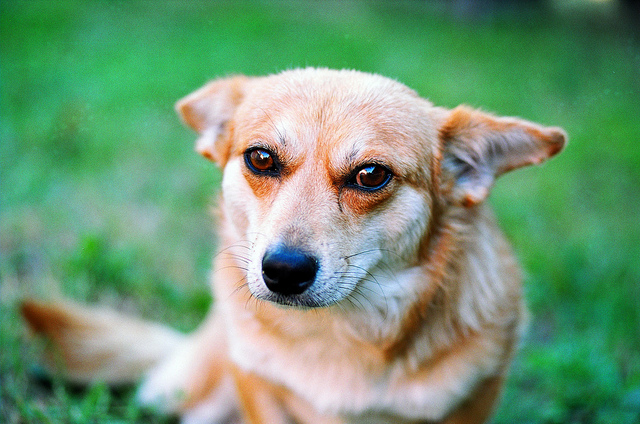Your dog is acting out. It is embarrassing and frustrating. You might even feel like a bad dog mom or dad. You just want your energetic dog at the end of the leash to stop and behave. So you pull, snap, and yell “No!” hoping punishment will fix the problem.
Punishment is defined as anything that decreases a behavior. When your dog is barking, lunging, and out of control, it makes sense to try to stop that behavior.
Here’s the problem. All that barking and lunging is communication from your dog. What exactly are you punishing? The behavior itself or your dog’s way of communicating?
Punishment decreases communication. Dogs use a wide range of body language and vocal sounds to talk with each other and with people. Humans also have a large spectrum of body language and vocalizations to communicate. Unfortunately, the two forms of communication don’t always translate correctly. While dogs do “correct” other dogs, there are degrees. Some of it is just vocal, body movements, touching, or combinations of the above. Bullying behavior is not a “correction,” it’s oppressive. (Is your dog a bully?) The problem is that humans cannot replicate canine body language or vocal signals accurately because we do not have the same physical or vocal abilities.
Punishment may reduce barking and growling, but we need dogs to communicate, and that includes some of the scary noises. We need the growl that precedes the bite. Without it, a dog might bite without any warning at all. Instead of punishing growling, we need to understand why the dog is growling and work on changing the fear or discomfort causing it. We do not want to stop the growl, but rather the emotion behind it.
Sometimes what you are punishing is not clear. Barking and lunging might not always mean aggression. Can you tell the difference between excited barking and aggressive barking? If you punish all barking and lunging, are you stopping excitement or aggression? If your dog is lunging because of fear, are you punishing the fear or the lunging? Worse yet, are you increasing your dog’s fear by punishing them when they are already scared?
Punishment only works when the person punishing is present. A dog might behave well with a special collar on, but once it is removed, the behavior returns. Punishment teaches dogs what not to do, but it does not teach them what they should do. Imagine your boss only told you what not to do and never what you should do. You would probably just sit and do nothing, waiting for instructions. When your boss leaves, you might relax and do whatever you want. Dogs are the same.
Punishment can also backfire. For example, grabbing a dog’s muzzle to stop barking might make the dog afraid of hands. This creates problems if you need to check their teeth or if they choke and you need to help them. Punishment has consequences beyond just behavior.
Punishment is not always effective. Many dog owners jerk the leash and yell at their dogs, but the barking and lunging continue. If punishment does not reduce the behavior, it is not the right approach. This is when dogs are called stubborn or vindictive, but actually, the problem is that the training method is ineffective or even making the problem worse. It is not the dog’s fault; it is the training approach that needs to change.
So what should you do if punishment is not working? The opposite of punishment is reinforcement or rewarding good behavior. Rewarding the behaviors you want teaches your dog what to do instead. For example, instead of barking and lunging, you want your dog to walk calmly by your side. When your dog walks nicely, give treats, praise, pets, or toys. If your dog barks or lunges at other dogs, strangers, or objects, increase the distance between your dog and the trigger. When your dog stays calm at this distance, reward them again. Take note of how far you had to move away and slowly decrease the distance over time while continuing to reward good behavior.
Training your dog does not need to be confusing or overwhelming. Working with a positive reinforcement trainer can make all the difference.
Is your dog displaying signs of aggression or reactivity? Our reactive dog training package offers effective support and guidance.
Photo Credit: Anton Novoselov http://www.flickr.com/photos/antonnovoselov/

